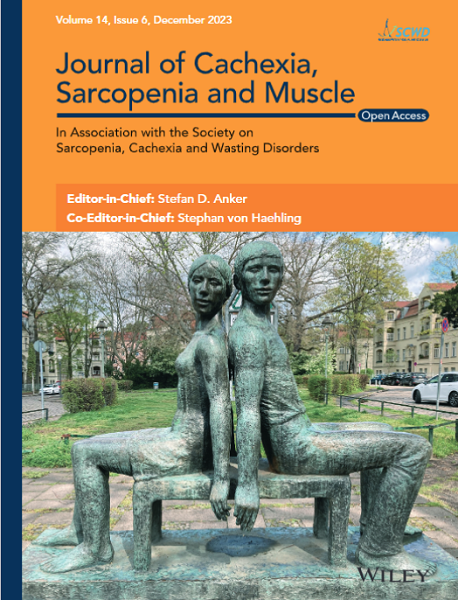Comorbidity and Malnutrition as Key Determinants of Mortality in Elderly Haemodialysis Patients: A One-Year Observational Study
Abstract
Background
In elderly haemodialysis patients, poor functional status correlates with malnutrition, morbidity and mortality. This study aimed to assess 1-year survival in an elderly haemodialysis population and evaluate the predictive capacity of commonly used scales for comorbidity, malnutrition, dependence and frailty.
Methods
We conducted a 1-year observational study (2022) on prevalent haemodialysis patients aged > 75 years with > 3 months of treatment. Mortality was assessed during the follow-up. We analysed sociodemographic, dialysis-related, analytical and lifestyle variables. Additionally, we evaluated comorbidity (Charlson), dependence (Barthel), malnutrition-inflammation (MIS scale) and frailty (FRIED). Statistical analysis included comparisons between continuous variables using the Mann–Whitney U test or Student's t test, based on normality distribution. Categorical variables were compared using the chi-square test. Kaplan–Meier survival analysis with log-rank test was used to compare survival curves. Multivariate analysis was performed using Cox proportional hazards models, adjusting for confounders including dialysis adequacy and underlying kidney disease aetiology. Optimal cutoff points for predicting mortality were determined using receiver operating characteristic (ROC) curves.
Results
A total of 107 haemodialysis patients (57% male, mean age 81.3 ± 4.53 years, mean time on haemodialysis 51.71 ± 51.04 months) were included. Sixteen patients (15%) died within 1 year. Deceased patients were older (83.94 ± 4.52 vs. 80.34 ± 4.39 years, p = 0.011) and had longer dialysis duration (76.46 ± 54.73 vs. 47.35 ± 49.4 months, p = 0.035), lower albumin (3.51 ± 0.54 vs. 3.86 ± 0.31 g/dL, p < 0.001) and lower creatinine levels (5.48 ± 1.12 vs. 6.50 ± 1.67 mg/dL, p = 0.021). They scored higher on all four scales analysed: Charlson (10.94 ± 1.81 vs. 8.95 ± 1.92, p < 0.001), MIS (11.31 ± 4.22 vs. 6.07 ± 3.27, p < 0.001), Barthel (52.50 ± 27.2 vs. 78.41 ± 23.11, p < 0.001), and FRIED (3.19 ± 1.05 vs. 2.18 ± 1.32, p = 0.005). Institutionalization (p = 0.004), inability to walk (p < 0.001) and stretcher transport (p < 0.001) were also significantly associated with mortality. The optimal cutoff points for predicting mortality were Charlson index ≥ 9.5 (AUC 0.788, 95% CI: 0.65–0.88), MIS ≥ 7.5 (AUC 0.844, 95% CI: 0.73–0.93), Barthel ≤ 67.5 (AUC 0.79, 95% CI: 0.68–0.79) and FRIED ≥ 2.5 (AUC 0.719, 95% CI: 0.56–0.83). In multivariable analysis, Charlson ≥ 9.5 (HR 2.75, 95% CI: 0.83–9.06, p = 0.096) and MIS ≥ 7.5 (HR 8.15, 95% CI: 1.10–60.58, p = 0.040) remained significant predictors of mortality.
Conclusions
The Charlson, Barthel, MIS and FRIED scales are useful tools for predicting mortality in elderly haemodialysis patients, with defined cutoff points for increased mortality risk. We have defined specific cutoff points that determine increased mortality risk in this population. However, comorbidity and malnutrition showed the strongest independent predictive value. These findings highlight the need for targeted interventions to address malnutrition and comorbidity in this vulnerable population.


 求助内容:
求助内容: 应助结果提醒方式:
应助结果提醒方式:


